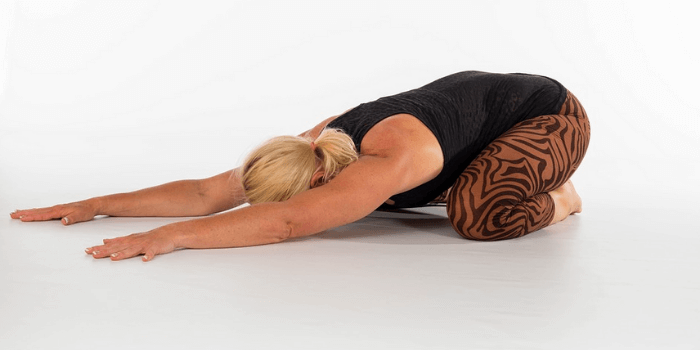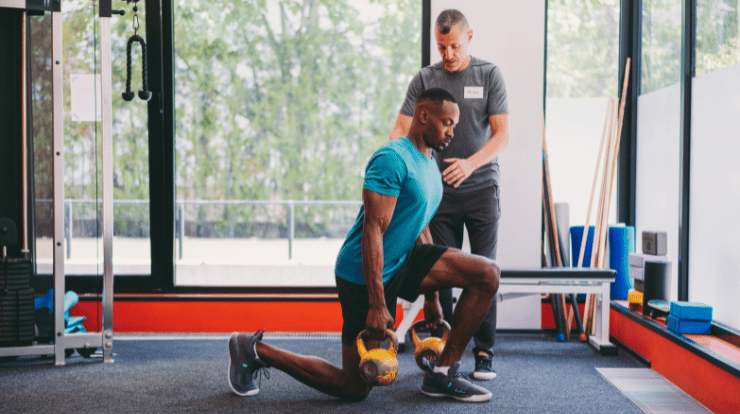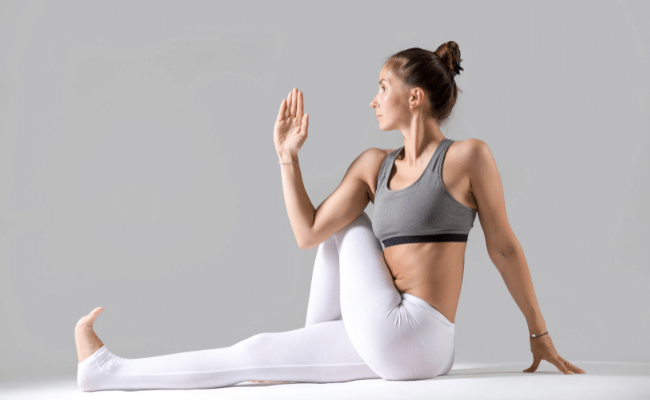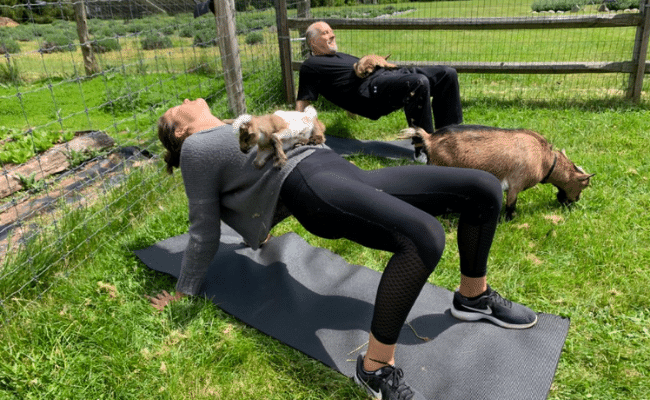
Types of Yoga, Yoga is a practice that has been around for centuries and is very popular today. Yoga is a great way to keep your body flexible and healthy. There are many types of yoga, each with its own unique benefits. Types of yoga include Vinyasa, Hatha, Ashtanga, Iyengar and Bikram Yoga.
What types of yoga are there?
There are many types of yoga: Hatha Yoga, Ashtanga Vinyasa, Anusara, Baptiste Power Vinyasa Flow… The list goes on and on. Despite the fact that there are so many different styles of yoga out there, most can be divided into two categories:
- Physical yoga
- Spiritual yoga
Physical yoga: refers to forms of exercise that focus on the body – asanas (postures), pranayama (breathing), mudras (hand gestures), and bandhas (muscle contractions). Physical forms of yoga can range from mild to very vigorous in intensity while still being healthy for you. Some examples include Iyengar Yoga, Asthanga Vinyasa, or Bikram Yoga.
Spiritual/Meditative Yoga: this means that it has a more spiritual aim than physical – usually including breath control, meditation, or visualization. This type of yoga is for those who are more interested in achieving some sort of high state of mind through the practice rather than simply exercising their bodies. Examples include Raja Yoga, Viniyoga, or Kundalini Yoga.
There are even some hybrid forms of yoga that combine the physical and spiritual into one, such as Anusara Yoga. You can also practice poses without any sort of breathing (such as Tae Bo). And last but not least there is Laughter Yoga – which combines deep breathing with hearty laughter to induce a state of relaxation. While this type doesn’t have deep philosophical roots in Eastern philosophy, it has shown results for relieving stress and depression.
What are the main types of yoga?
There are three main types of yoga: Hatha (physical), karma (service), and raja (mental). The physical aspect is called hatha yoga; the service portion is known as karma yoga, and the mental-spiritual aspect is referred to as the raja type of yoga.
What is hatha yoga?
Hatha yoga is really the kind of yoga that most people are familiar with—a system of physical exercises that develop strength and flexibility. Asana means posture, which refers to Hatha yoga’s asanas or postures. Hatha yoga also includes breathing techniques (pranayama), purification procedures (kriyas), and techniques (yoga Nidra).
What is karma yoga?
” Karma yoga ” is a Sanskrit word and it means ” right occupation “. All the great seers of all ages – saints, prophets, gurus, or masters never ever prescribed any other types of yoga to practice with the goal to realize Brahma (God) than karma yoga. In fact, I believe that this is the only way one can become realized according to Vedanta. This has been my experience as well as what’s been told by my master who teaches us his direct knowledge about practicing selfless service through karma yoga.
what is raja (mental) yoga?
raja yoga is the most ancient of yoga, carrying with it a lineage that is lost in antiquity. It is also the highest and most profound form of yoga practice. Raja yoga’s means are those of meditation (dhyana), concentration (Drishti), and various forms of discriminative self-examination. By using the discriminating intellect to observe itself, one becomes transformed by this very process into a divine mode of being — first seedily in his or her own inner experience, then on into other beings through what we call karma yoga, or service work.
But raja yoga goes far beyond all these things because it explores not only our internal experience but the external world as well.
What are the different types of yoga classes?
Types of yoga classes can be generally divided into two groups: those that are Hatha-based and those that are non-Hatha. Hatha means sun salutation in Sanskrit (and no, not all yoga classes have “sun salutations”), and a Hatha class is one that focuses on postures, breathing techniques, and meditation. Challenging physical stretches, strengthening, and endurance build-ups motivate many practitioners of this style of yoga. Those who practice the non-hath variety are more interested in the philosophical side of yoga — learning about their chakras, working on self-realization, or finding liberation.
Of course, there is some overlap — the Hatha school borrows from both Western and Eastern practices, and non-hath classes can still be physically challenging. If you’re just starting out with yoga, the biggest difference between these two schools of thought will likely be your own motivation. Which one do you think will keep you coming back for more?

Types of yoga and their benefits:
Every form of yoga has its own benefits. While some are easier to practice, there are others that take a longer time – but also result in better health and fitness. It is always important to find what works for you and stick with it. The following yoga styles have their unique effects on the human body:
Hatha yoga:
This one is sometimes confusing because many people believe this refers to ALL forms of yoga. However, Hatha can be defined as a science of how the mind and body control each other via breath, poses (asanas), and meditations (dhyana).
Bhakti yoga:
This form of yoga uses a deep meditation technique called Japa. It came from the system of karma and encourages worshipping of God through specific mantras and constant repetition before an image or idol. This can be done by chanting or simply repeating a word over and over again in your mind without thought.
Karma yoga:
The simplest definition here is that this involves selfless actions for others with no expectation of getting anything back from them. Karma Yoga does have many great benefits even though it might seem impossible to do at times because you are doing things only for other people – without any thought of personal benefit.
Iyengar Yoga:
With this style, you get a detailed guide about the correct alignment for different yoga poses. BKS Iyengar is the man behind it and he has published a lot of books that you can read. The great thing about Iyengar Yoga is that it helps beginners to get the correct form for each pose and also make sure that they do not hurt themselves during their practice sessions.
Ashtanga yoga:
This style was developed by Sri K Pattabhi Jois and belongs to the Viniyoga school of yoga. It is a complete system with eight series (called A-H) which takes at least eight years to master. If you are looking for fast results, this may not be the type you want as every posture needs to be properly performed from head to toe before moving on to another one. This guarantees safety but limits some other benefits such as flexibility which can be achieved by doing multiple repetitions.
Viniyoga:
This is also another style that has been created and published by the same man who invented Ashtanga Yoga – Sri K Pattabhi Jois. However, unlike Ashtanga, this type uses a gentler approach with fewer postures per session and a special focus on alignment. This actually makes it easier yoga to practice for beginners as they do not need to worry about hitting the perfect posture every time from day one. The downside here is that you will still get limited flexibility results due to short poses being performed without enough repetitions of each pose.
Types of yoga and their purpose:
The purpose of yoga depends on the kind of yoga practiced. There are many types – from acrobatic to devotional meditation and everything in between. The ones you should look out for, however, are physical poses that improve flexibility and strengthen muscles and ligaments. These include:
Asanas: This is the most common type of yoga performed today – a series of stretching and strengthening exercises meant to tone your body as well as prepare it for more rigorous postures (below).
Asanas are designed not only to promote overall health but also specific aspects such as increased energy levels, decreased stress, or lower cholesterol. Asanas are typically done in a series of several poses.
Ashtanga: This is an athletic and challenging form of yoga that involves transitions between multiple poses while breathing rhythmically. The idea behind this advanced style of yoga is to achieve greater flexibility, strength, endurance, and mental focus. Ashtanga’s also known as power yoga due to the speed with which it can help you burn calories while building your overall fitness level.
Bikram: Also called hot yoga because it takes place in a room heated to about 40 degrees Celsius (roughly 104 Fahrenheit), Bikram focuses on 26 postures performed in series over 90 minutes. The temperature helps increase sweat levels during practice – expelling toxins from the body much more quickly than in cooler rooms. Bikram is a good choice for those looking to lose weight because of the heat’s ability to increase metabolism, burn fat and build lean muscle.
Iyengar: This form of yoga emphasizes proper body alignment during poses, meaning students will spend much more time on individual postures than in other forms such as vinyasa or Ashtanga where poses are done quickly through transitions. Iyengar also incorporates props (see below) into practice to help you achieve perfect posture while strengthening muscles that support your joints. It’s not recommended if you’re seeking to sweat but it is excellent for beginners – especially those with physical limitations such as joint injuries or bad backs.
Type of yoga breathing:
There are different types of yoga breathing techniques that can help in curing your sinusitis problem. The first type is called as
- Ujjayi breathing technique: Here the breath should be taken from both the nostrils and mouth at the same time. This helps in the strong nasal clearing by opening up the nasal passage, which will assist you to overcome your blocked nose problem.
- Kapalabhati Pranayama: This pranayama is a very good exercise for improving your respiratory system and digestion function. Do breathe out hard repeatedly so as to clear your throat properly after doing this pranayama
- Anulom Vilom: This pranayama should be done in a sitting posture with your spine straight and chest raised. Breathe in through the left nostril, hold it for some time and then breathe out through the right nostril. Repeat this process twice before changing to alternate nostrils.
Another important point when talking about yoga breathing techniques is that you have to make sure that you are maintaining an equal duration of inhaling and exhaling while practicing these exercises. This way you will easily expand your lungs and prevent further complications due to constipation problems in the future. Last but not least, it is very important for people suffering from sinusitis problems to follow diet restrictions like avoiding junk food items or consuming

Types of yoga ball exercises:
Yoga ball exercises can be categorized into three categories:
- Yoga Ball workouts: where you exercise on the yoga ball
- Yoga Ball training: where you use it for weight and balancing training; and
- Yoga Ball games: which are played while seated on the ball
Numerous activities/exercises can fall within these three broad categories. For instance, yoga poses such as cat-cow pose, cobra pose, and downward dog pose can be done directly on a yoga ball or in a chair using a Yoga Gripz mat to help one maintain stability during the workout. Other activities like squats in different variations also can be practiced with a yoga ball by sitting on it and doing various types of squats and lunges.
Types of yoga dance:
There are a number of different types of yoga dance. The most popular forms are Bhakti, Hatha, Karma, Jnana, and Raja yoga. One’s type of yoga is determined by one’s general outlook and philosophy on life. This generally reflects the individual’s perspective on the self in relation to others and their place within society as well as an understanding of the physical aspects of the universe in which we all live.
Buddhism teaches that life is full changeability; this concept resonates with yogis who teach that change occurs within the body and mind as much outside it. Yoga dance then gives rise to a questioning approach to oneself, including how their own body moves or does not move under its own power.







